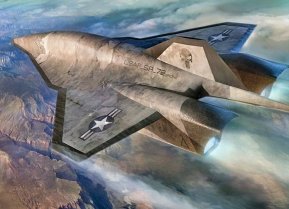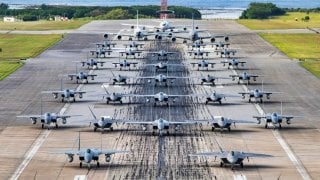Billions in Fighter Planes: What A Fleet of F-15s in An Elephant Walk Looks Like
The United States Air Force has showcased its operational readiness and airpower through impressive "elephant walks," where numerous aircraft taxi in close formation before takeoff.
Summary and Key Points: The United States Air Force has showcased its operational readiness and airpower through impressive "elephant walks," where numerous aircraft taxi in close formation before takeoff.
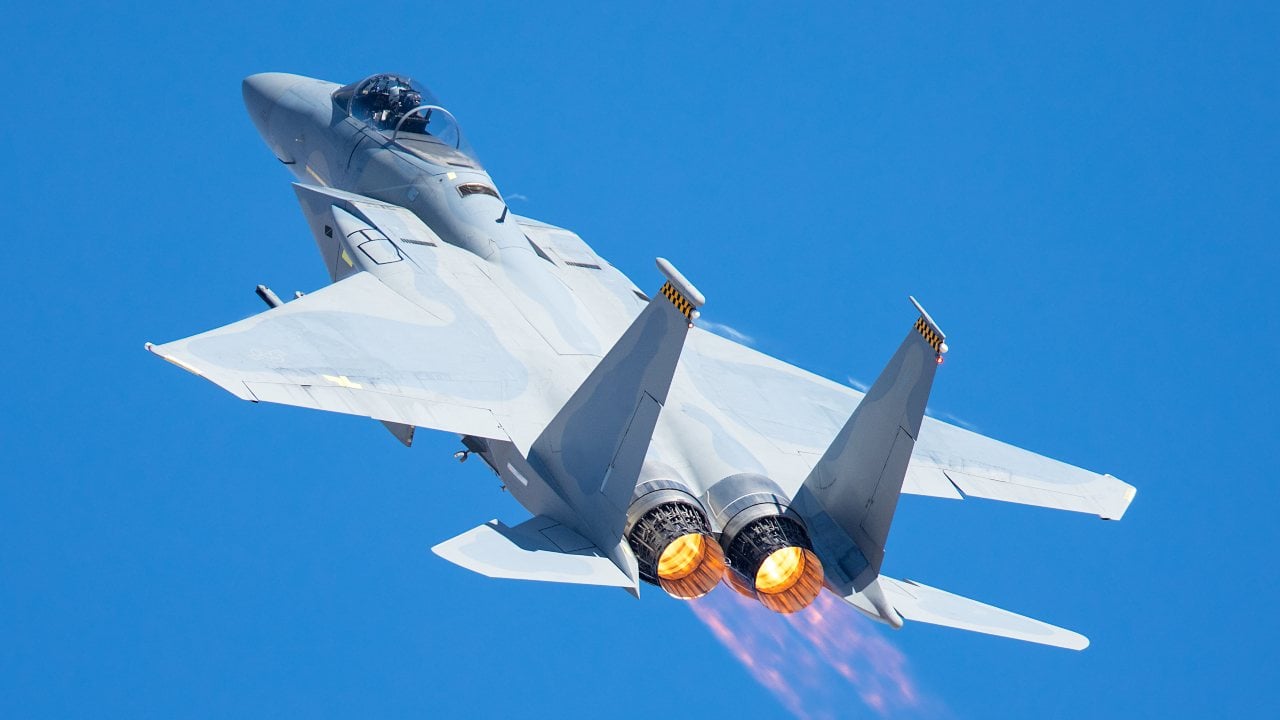
-Notably, exercises at Kadena Air Base, Japan, and Seymour Johnson Air Force Base, North Carolina, featured formations of F-15C/D Eagles, F-15 Strike Eagles, and support aircraft. These displays emphasize the USAF's ability to rapidly deploy and generate airpower, particularly in the Indo-Pacific region.
-The F-15 Eagle, developed for air superiority, and its multi-role variant, the F-15E Strike Eagle, highlight the versatility and combat prowess of the fleet.
F-15 Eagles and Strike Eagles Lead Impressive Elephant Walk Exercise
The United States Air Force has conducted a number of impressive "elephant walks" –the term for taxiing a number of aircraft before takeoff – in recent years. In addition to the close formation on the ground, it can involve a minimum interval takeoff.
It was just a few years ago that a formation of two dozen F-15C/D Eagle fighter jets assigned to the 44th and 67th Fighter Squadrons, a KC-135 Stratotanker assigned to the 909th Air Refueling Squadron, an E-3 Sentry assigned to the 961st Airborne Air Control Squadron, and an HH-60 Pavehawk assigned to the 33rd Rescue Squadron was seen lined up on the runway as a part of routine wing readiness exercise at Kadena Air Base, Japan.
As Defence-Blog reported, "The goal of this exercise was to execute a short notice, agile combat execution-style deployment and generation. The large formation movement was part of a routine exercise scenario that tested the 18th Wing’s ability to generate airpower in support of the defense of Japan and other partner nations, ensuring the stability and security of a free and open Indo-Pacific."
Not a Picket Line with the F-15 Strike Eagle
It was a decade earlier, on April 16 at Seymour Johnson Air Force Base (AFB), North Carolina, when nearly seventy F-15 Strike Eagles also took part in what was among the largest such elephant walks involving the fourth-generation aircraft.
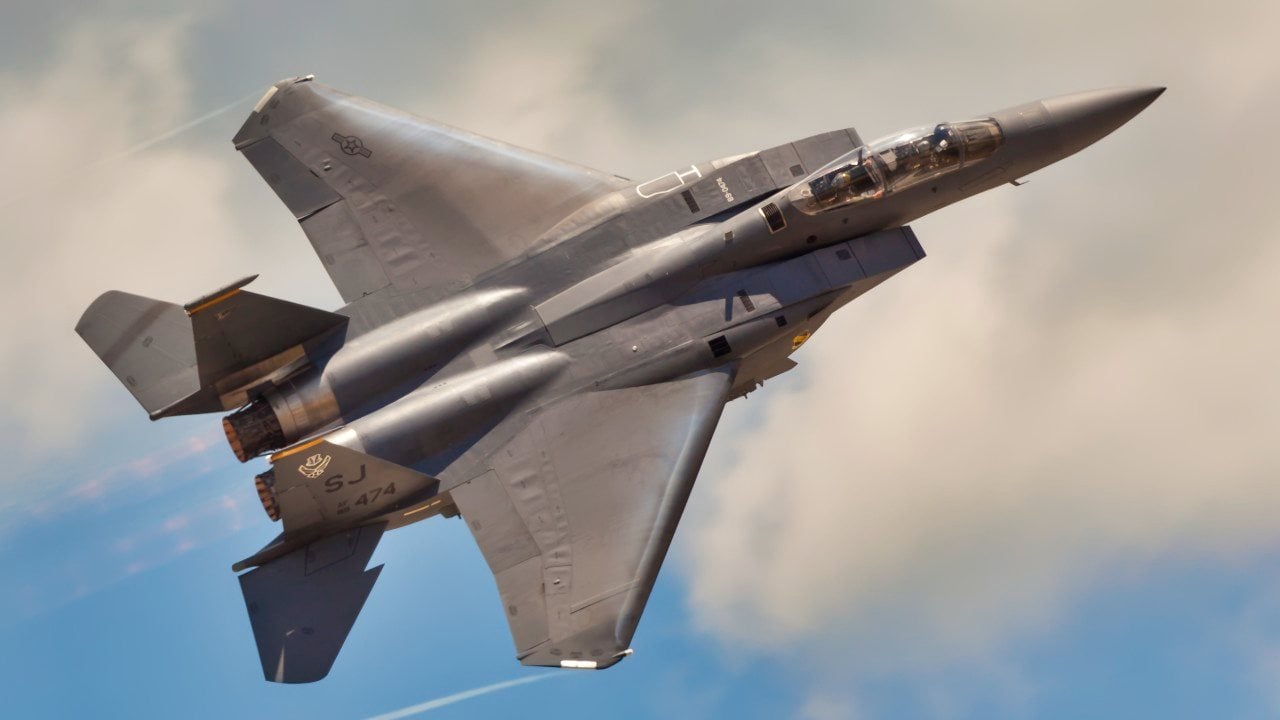
The Strike Eagles from the United States Air Force's 4th Fighter Wing – with aircrews assigned to the 4th Fighter Wing's 333rd, 334th, 335th, and 336th Fighter Squadrons – had lined up on the runway during a Turkey Shoot training mission, in which the more than five dozen aircraft successfully destroyed in excess of 1,000 targets on bombing ranges across the state to commemorate the 4th's victory over the Luftwaffe on April 16, 1945.
History of Elephant Walks
The first elephant walks occurred during the Second World War when large fleets of allied bombers massed for attacks – and observers on the ground noted that as the aircraft lined up, it resembled the nose-to-tail formations of elephants walking to a watering hole.
Today, the U.S. Air Force employs elephant walks to show the capability of a unit as well as the teamwork that is required to conduct such an operation. It also can help pilots prepare for the launching of fully armed aircraft in a mass event if needed.
F-15 Eagle and Strike Eagle
The F-15 Eagle was developed to keep pace with the emergence of the MiG-23 and MiG-24 fighters, the United States Air Force sought to replace its fleet of McDonnell Douglas F-4 Phantom IIs, which had been in service since 1960. The program began in 1967 and after more than two years of intensive testing and evaluation, the Air Force awarded McDonnell Douglas the F-15 Advanced Tactical Fighter contract, after the aviation maker placed first amongst the three competitors in all phases of the competition but also had the lowest contract price.
The single-seat, all-weather, air-superiority fighter was a noted departure from the F-4, a tandem two-seat, long-range jet interceptor, and fighter bomber. While the F-4 could engage a ground-attack role, this was initially deemed unnecessary by the F-15 Special Project Board.
However, the designers at McDonnell Douglas continued to work on a potent multi-role version of the F-15E Strike Eagle, which can fulfill both roles of air-to-air superiority and ground strike. That provided the USAF with an aircraft that could fight its way to enemy territory, engage and destroy enemy aircraft, destroy an assigned ground target, and fight its way back home without the need for additional air support.

In its decades in service, the F-15 has racked up more than 100 victories in the sky and yet suffered not a single loss in aerial combat. It is easy to see why the high-flying Eagle/Strike Eagle can make an adversary take notice when it lines up on a runway in an elephant walk.
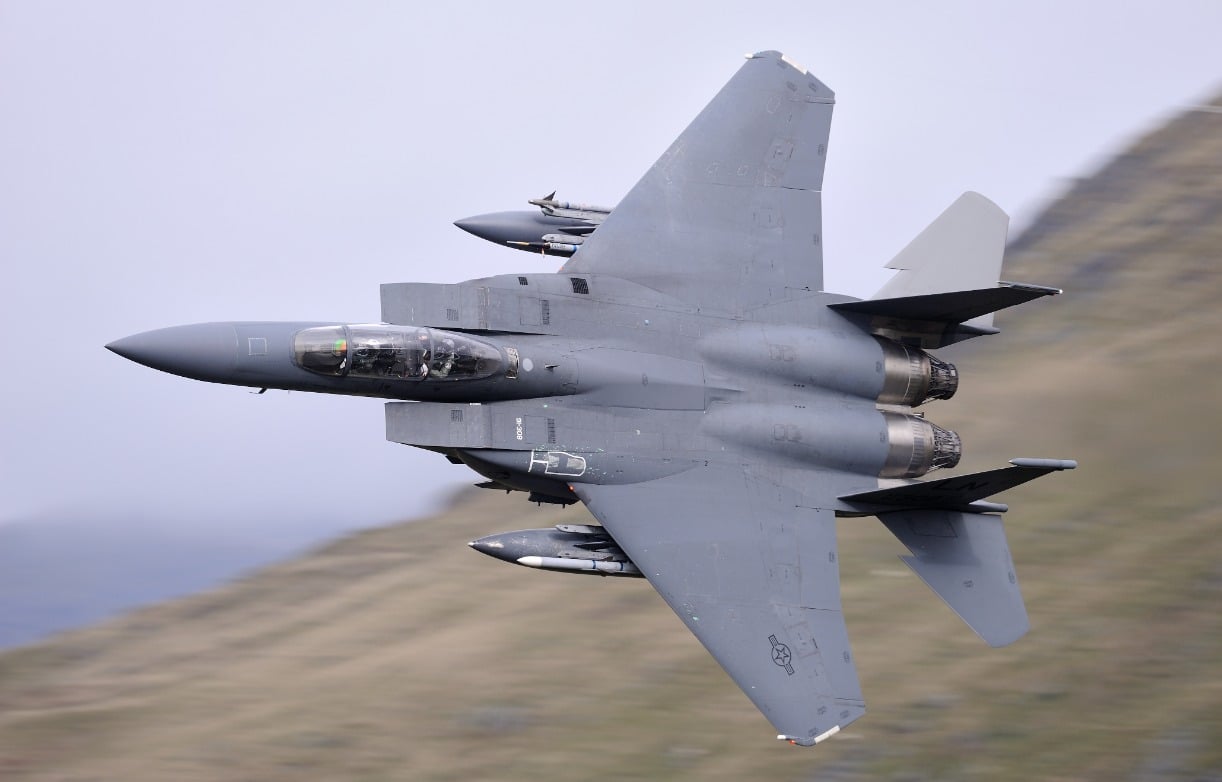
Author Experience and Expertise: Peter Suciu
Peter Suciu is a Michigan-based writer. He has contributed to more than four dozen magazines, newspapers, and websites with over 3,200 published pieces over a twenty-year career in journalism. He regularly writes about military hardware, firearms history, cybersecurity, politics, and international affairs. Peter is also a Contributing Writer for Forbes and Clearance Jobs. You can follow him on Twitter: @PeterSuciu. You can email the Author: [email protected].
All images are Creative Commons.
